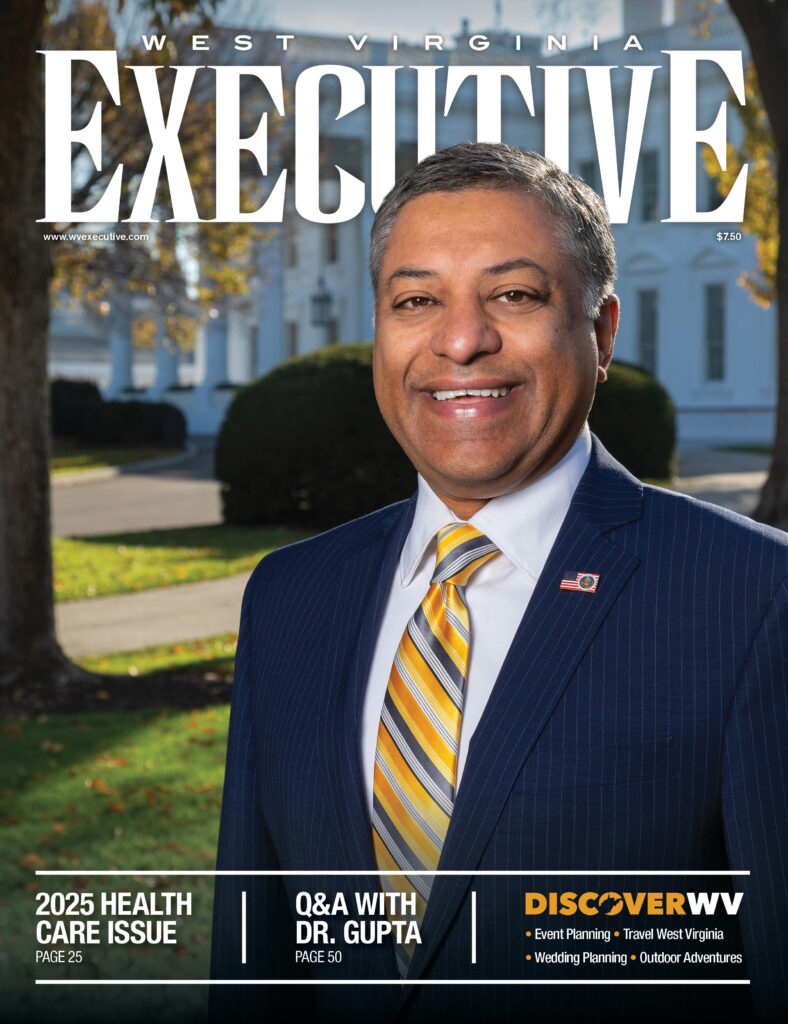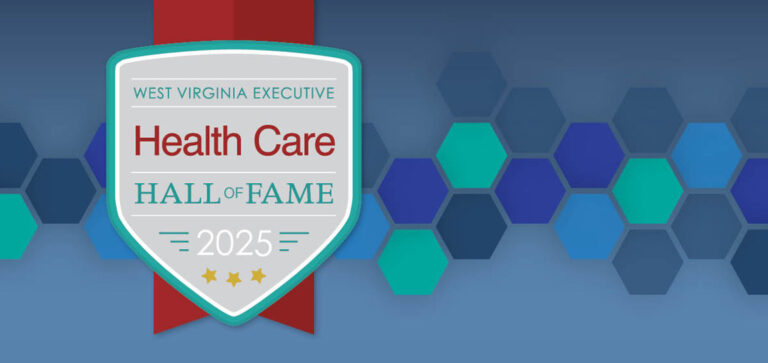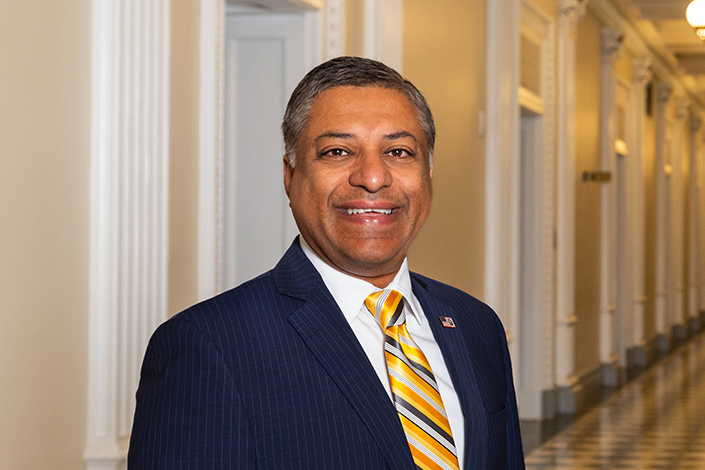The Vital Role of Innovation in Health Care
By Samantha Cart

The phrase innovation in health care draws the mind naturally toward new medical devices, drugs and treatments. However, it can also take the form of creatively addressing social determinants of health, practicing preventative medicine, improving efficiency and eliminating human error. In the Mountain State, talented professionals are facing the challenges of the medical field head on and creating unique solutions, making Almost Heaven an even better place to live a long, happy and healthy life.
Catholic Charities, the largest nonprofit social services agency in West Virginia, serves more than 25,000 individuals each year through programs focused on alleviating the effects of poverty. While physical health is of the utmost importance, the organization also focuses on how economic stability, access to education and health care services and the safety and support of the communities it serves affect health outcomes.
“We believe health care must be collaborative to work and that it doesn’t stop outside the doors to the hospital,” says Mark Phillips, president and CEO of Catholic Charities West Virginia.
This approach led to the creation of the Hospital Transition Program (HTP), which supports patients during their transition from the hospital to home.
“Our HTP case managers meet with patients before discharge to really understand the situation at a patient’s home,” Phillips explains. “So many of the patients we see are going back to homes with low food security or are behind with expenses. If we can meet some of those immediate needs, the patient has an easier time thinking about their long-term health and well-being.”
Much of the work Catholic Charities does is relational, including connecting patients with local resources for ongoing support, transportation, utility assistance and food/nutritional support. According to Phillips, this only works by first developing trust with patients.
“Chances are patients have met dozens of doctors, nurses and social workers in their time at the hospital, so it can be a challenge to build an authentic rapport,” he says. “It requires a lot of time and a case manager that authentically wants to help. Our case managers also need to be up to date on community resources, so if there’s something we can’t supply, we know where to go.”
Phillips sees the six-week period after hospital discharge as a time of accompaniment, walking alongside a patient during their recovery journey. “Much of the time, we’re just checking in like you would on a relative or friend,” Phillips says. “No two people are the same. For some, we work to connect them with resources like home-delivered meals or home safety items. For others, just stopping by to play a game of cards provides the support that they need.”
While Catholic Charities works to improve aftercare and recovery, Roane General Hospital (RGH) is taking a similar approach to preventative care and wellness by connecting patients with a variety of resources and services. A recent community needs assessment labeled Roane County as one of the unhealthiest counties in the U.S. Recognizing the role it plays in the health and wellness of its community, RGH leadership took note and immediately set to work on what is now known as the Prescription for Your Health (P4YH) program.
At the heart of the program is a paradigm shift from treatment alone to wellness and prevention utilizing exercise, education and behavioral health coaching as key interventions.
“We needed to make an investment in improving our health and well-being and not just react and treat the underlying illness and disease,” says RGH CEO Doug Bentz. “If not us, then who?”
At the same time the program was being developed, RGH was also planning a renovation and expansion. The expansion embraced the new health vision by growing the existing fitness center, building a pool for aquatics and joint health, expanding and integrating therapy space into the wellness center with cardiac and pulmonary rehabilitation, building a café to serve healthy food choices and adding a new walking trail.
According to Jeff Tanner, vice president for the RGH Center for Wellness, P4YH is a medically directed, physician-ordered program that accepts referrals from both internal and external providers. It is founded on three pillars: a provider-directed medical plan, health and wellness education and a medical fitness plan. Participation is incentivized, and the program is free of charge.
The medical health plan is developed between the patient and their care team at the time of referral to outline the participant’s health and wellness goals. For example, in addition to taking their prescribed medications and returning for follow-up exams, a patient may also be required to receive regular health screenings like colonoscopies, mammograms or immunizations to support overall health and wellness. Each plan is tailored to the specific patient.
Health literacy is also essential in P4YH. Participants are required to complete health education courses on basic nutrition, healthy cooking, diabetes management and tobacco cessation. They also have access to a meal planning and tracking app as well as health coaches like Kimberly Mertz, director of P4YH.
“Health and wellness can be overwhelming, and health coaching serves the role of working side by side with patients putting together complex puzzle pieces for success,” she says. “The key to health coaching and sustaining health change is understanding and motivating around why and meeting patients where they are to set sustainable goals and motivation.”
Of course, the pioneering spirit is also powering advances in medical invention, treatment and technology, leading to incredible possibilities for those receiving care in West Virginia and beyond.
With patient care and education at the forefront of its mission, Marshall Health is driven by the innovation of its physicians, hospitals, ambulatory facilities and medical offices. Part of this commitment to innovation includes a recent collaboration with Intermed Labs, a startup venture studio that advances health technology concepts.
“Intermed is adept at sieving through ideas, accepting promising ones and taking them quickly to prototype development and beyond,” says Ali Oliashirazi, M.D., orthopaedic surgeon at Marshall Health and vice dean and chair of orthopaedic surgery at the Marshall University Joan C. Edwards School of Medicine.
Last summer, Marshall Health and Intermed launched Kneedle LLC, a company introducing a medical device designed to enhance the detection of infections in joint replacement surgeries.
“The most common complication after hip and knee arthroplasty is infection,” says Oliashirazi, co-inventor of the device. “Despite all our advances, there are still false negatives, meaning some tests could be negative even though there is infection present. Our hope is that this device will improve detection rates immensely.”
The creation of this device has many positive implications. First, its ability to improve infection detection rates could lead to fewer delays in treatment and post-surgical complications and reduce the need for additional surgeries. Second, this technology highlights the potential of collaboration in driving medical advancements, marrying clinical insight and technology.
At the WVU Rockefeller Neuro-science Institute (RNI), there is special focus on health care innovation in developing and implementing new methods, processes, technologies and treatments that improve the quality, efficiency, accessibility and outcomes of neurological conditions. Over the last several years, RNI’s team of expert clinicians and scientists has developed many new medical technologies, health care delivery systems, therapies and procedures—including minimally invasive surgical techniques and non-invasive neuromodulation—optimizing clinical practice to serve the needs of patients and advance health care. One such development is the Transcranial Magnetic Stimulation (TMS) program.
The program, comprised of a state-of-the-art clinic and research facility, is the only multidisciplinary specialty clinic of its kind in West Virginia. It specializes in the use of non-invasive brain stimulation in combination with neuro-navigation—or using brain imaging to create 3D models for treatment—as an alternative or complementary treatment for conditions like treatment-resistant depression, obsessive-compulsive disorder (OCD), stroke rehabilitation and chronic pain.
The implications of this work are invaluable as multiple teams of neuroscientists work in this facility to study new treatments for Parkinson’s disease, Tourette’s syndrome, Alzheimer’s disease, opioid use disorder, smoking cessation and chronic pain.
“TMS is a noninvasive and targeted neuromodulation therapy that uses short pulses of magnetic energy to stimulate nerve cells in the brain. These magnetic pulses are directly delivered to a desired area in the brain that can help normalize brain activity and lead to improvement in clinical symptoms,” says Umer Najib, M.D., FAAN, vice chair for operations and director of the RNI TMS program. “TMS is completely noninvasive and does not require medications, sedation or anesthesia. It only targets the area of the brain involved in the condition being treated. Patients are awake and alert during the treatments and can immediately return to normal activities. TMS is very safe and has very few side effects. In contrast, the pharmacological therapies for depression or OCD are often associated with significant side effects commonly leading to intolerance to treatment.”
According to Najib, during treatment sessions, which last between 20-45 minutes, patients are seated in a special chair and an electromagnetic coil is placed on their head. The coil generates a series of brief, rapid, repetitive magnetic pulses that feel like a tapping on the head. These magnetic pulses activate nerve cells in the brain and alleviate clinical symptoms. Once the treatment is complete, the patient can leave on their own and go back to normal activities with minimal side effects.
As West Virginians continue to lean into their revolutionary spirit and disrupt the health care space, the reason behind their hard work is mutual and clear—they are committed to creating a better future for their families, friends and neighbors.
Revolutionizing Health Care Education with careLearning
By Kenzie Dye
careLearning is revolutionizing health care training through its innovative learning management system (LMS), designed to meet the unique compliance and educational needs of health care organizations. By leveraging technology, careLearning makes it easy to assign and monitor the completion of content that is compliant with current regulations and tailored to the specific requirements of various health care settings. Its Essentials program is particularly impactful, offering cost-effective training solutions for smaller facilities.
The company’s commitment to personalized customer service distinguishes it from competitors. Clients are assigned a dedicated support person, ensuring prompt and personalized help. This approach fosters a close relationship with clients. careLearning also emphasizes the creation of high-quality educational content, which is regularly updated in response to new guidelines and regulations.
Additionally, careLearning’s services extend beyond traditional LMS functionalities. It provides innovative solutions like the Course Center, which allows facilities to create and manage their own training content, and the Information Security Series, which educates health care workers on safeguarding against cybersecurity threats.
Founded through a collaboration of hospital associations, careLearning’s mission is to offer affordable, high-quality training to health care providers. Its focus on small and rural health care facilities, which often face financial constraints, demonstrates a commitment to improving health care standards across the Mountain State. By continuously evolving and expanding its product offerings, careLearning ensures that health care providers are well-equipped to meet the ever-changing demands of the industry.







